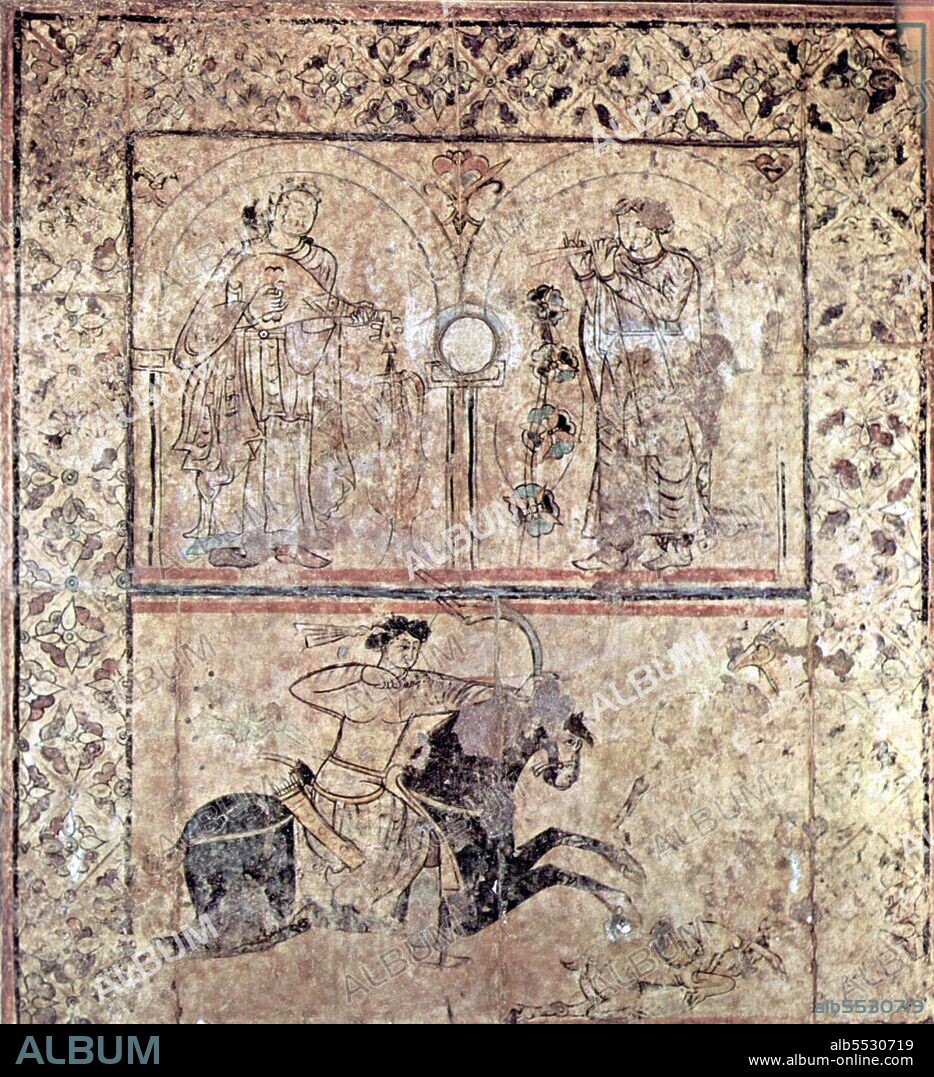alb5530719
Syria: Musicians and an archer on horseback. Fresco from Qasr al-Hayr al-Gharbî, Syria, Ummayad caliph's Palace, built in the early 7th century CE.

|
Añadir a otro lightbox |
|
Añadir a otro lightbox |



¿Ya tienes cuenta? Iniciar sesión
¿No tienes cuenta? Regístrate
Compra esta imagen.
Selecciona el uso:

Título:
Syria: Musicians and an archer on horseback. Fresco from Qasr al-Hayr al-Gharbî, Syria, Ummayad caliph's Palace, built in the early 7th century CE.
Descripción:
Ver traducción automática
Qasr al-Hayr al-Gharbi castle (Arabic: ??? ????? ???????), located 80 km south-west of Palmyra on the Damascus road, is a twin palace with Qasr al-Hayr al-Sharqi, built by the Umayyad caliph Hisham ibn Abd al-Malik in 727 CE. It was used as an eye of the king during the Umayyad era, to control the movement of the desert tribes and to be a barrier against them, as well as being a hunting chalet. Later it was utilized by the Ayyubids and the Mamelukes but was abandoned permanently after the Mongol invasions. The castle is quadrangular in outline with 70-meter sides. The central doorway to the castle is very attractive, and has been moved to the National Museum of Damascus to be used as the entrance. Its semi-cylindrical towers on the sides of the doorway, columns, and the geometric shapes mirrored a blend of Persian, Byzantine and Arab architecture. Not much remains from the castle. All that is visible is a reservoir to collect waters from Harbaka dam, a bath and a khan. The gateway is presently preserved as a façade in the National Museum of Damascus.
Crédito:
Album / Pictures from History/Universal Images Group
Autorizaciones:
Tamaño imagen:
4000 x 4385 px | 50.2 MB
Tamaño impresión:
33.9 x 37.1 cm | 13.3 x 14.6 in (300 dpi)
 Pinterest
Pinterest Twitter
Twitter Facebook
Facebook Copiar enlace
Copiar enlace Email
Email
